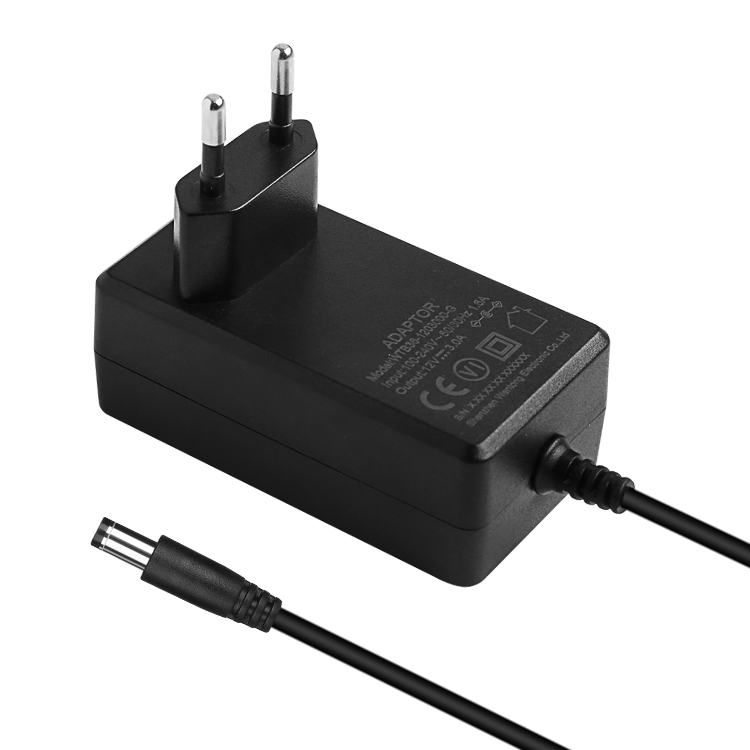Understanding the Key Specifications of Wall-Mounted Power Adapters
2024-08-12
Wall-mounted power adapters are essential components in various electronic devices, providing the necessary power to operate them efficiently. Understanding the key specifications of these adapters is crucial for ensuring that they are suitable for the intended application. In this blog, we’ll delve into the critical specifications of wall-mounted power adapters and explore how these factors influence their performance across different applications.
1. Voltage Rating
The voltage rating of a wall-mounted power adapter indicates the amount of electrical potential difference it can provide. This is typically expressed in volts (V) and is one of the most important specifications to consider. The voltage rating must match the input voltage requirements of the device it powers. If the voltage is too high, it can damage the device, while too low a voltage may result in insufficient power, leading to poor performance or failure to operate.
- Impact on Performance: Proper voltage ensures that the device receives the correct amount of power to function optimally. Using an adapter with the wrong voltage can lead to issues such as overheating, reduced efficiency, and potential damage to the device.
2. Current Rating
The current rating, expressed in amperes (A), indicates the maximum amount of current that the adapter can supply to the connected device. Devices require a certain amount of current to operate correctly, and the adapter must be capable of supplying this current without exceeding its limits.
- Impact on Performance: An adapter with a current rating lower than required can lead to overheating and reduced lifespan of the adapter. On the other hand, an adapter with a higher current rating can supply the necessary power without stress, ensuring stable operation and extending the device's life.
3. Power Rating
The power rating of a wall-mounted power adapter is the product of its voltage and current ratings, expressed in watts (W). This indicates the total amount of power the adapter can deliver to a device.
- Impact on Performance: The power rating must match or exceed the power requirements of the device. An adapter with an insufficient power rating will struggle to supply the needed energy, leading to reduced performance or failure to operate. A properly rated adapter ensures that the device runs efficiently without overloading the power supply.
4. Efficiency
Efficiency is a measure of how well the adapter converts electrical energy from the wall outlet into usable power for the device. It is typically expressed as a percentage. Higher efficiency means less energy is lost as heat, which is crucial for energy savings and reducing environmental impact.
- Impact on Performance: High-efficiency adapters reduce energy consumption and minimize heat generation, leading to cooler operation and longer lifespan of both the adapter and the connected device. This is especially important for applications where energy efficiency is a priority.
5. Input Voltage Range
The input voltage range specifies the range of voltages the adapter can accept from the wall outlet. This is particularly important for devices intended for use in multiple regions with varying power standards.
- Impact on Performance: A wider input voltage range allows the adapter to be used in different countries without the need for additional converters. This flexibility is essential for devices designed for global markets, ensuring consistent performance regardless of the local power supply.
6. Output Connector Type
The output connector type refers to the physical plug that connects the adapter to the device. Different devices may require different connector types, so it’s important to choose an adapter with a compatible output connector.
- Impact on Performance: A mismatched connector type can prevent the adapter from being used with the intended device. Ensuring the correct connector type is crucial for maintaining a secure and stable connection, which in turn affects the overall reliability and performance of the device.
Conclusion
Understanding the key specifications of wall-mounted power adapters is essential for selecting the right adapter for your device. By considering factors such as voltage, current, power rating, efficiency, input voltage range, and output connector type, you can ensure that the adapter will provide optimal performance and reliability in your specific application. Whether you’re powering a small household device or a complex industrial system, these specifications play a crucial role in the overall functionality and longevity of your equipment.



